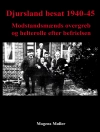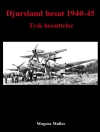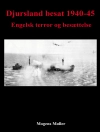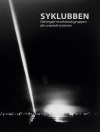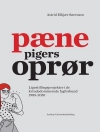Our continued use of the combustion engine car in the 21st century, despite many rational arguments against it, makes it more and more difficult to imagine that transport has a sustainable future. Offering a sweeping transatlantic perspective, this book explains the current obsession with automobiles by delving deep into the motives of early car users. It provides a synthesis of our knowledge about the emergence and persistence of the car, using a broad range of material including novels, poems, films, and songs to unearth the desires that shaped our present “car society.” Combining social, psychological, and structural explanations, the author concludes that the ability of cars to convey transcendental experience, especially for men, explains our attachment to the vehicle.
İçerik tablosu
List of Figures
Preface
Introduction
- Explaining the car: Prolegomena for a history of North-Atlantic automobilism
- Introduction: writing a synthesis
- Do narratives explain?
- Constructing a master narrative
- Developing an explanatory toolbox
- Conclusions
PART I: EMERGENCE (1895 – 1918)
Chapter 1. Racing, touring, tinkering: constructing the adventure machine (1895 – 1914/1917)
- Introduction
- First phase: emergence and roots of the petrol car (until 1902)
- Second phase: resistance against elite touring in heavy family cars (1902 – 1908)
- A first analysis of automotive adventure: the masculine ‘conquest of nature’
- Third phase: the “small capitalist” and the “average man” (1908 until the war)
- Conclusions
Chapter 2. How it feels to be run over: the grammar of early automobile adventure
- Introduction
- Driving and writing: Analyzing ‘affinities’ of touristic and artistic experiences
- ‘Auto-poetics’: mainstream authors
- Literary resistance against the car: Critical voices from the UK
- Colonialism by car: Gendered travel writing
- Male violence and aggression: A French-Belgian group of writer-motorists
- Sub-literary novels: the Williamsons and youth novels
- Flight Forward: The avant-garde, silent movies, and the celebration of automotive violence
- Tarkington, Cather and Dreiser: auto-poetics before America’s entry into the war
- Enhanced Adventures: Analysis and conclusions
Chapter 3. Driving on aggression: The First World War and the systems approach to the car
- Introduction
- Preparing for war (1): clubs, the military, and aggression
- Preparing for war (2): organizing mobility
- Mobilization, immobility, remobilization: aggression, violence and atrocities
- War trophies 1 to 3: the truck, logistics and maintenance
- War trophy 4: thanatourism and other adventures
- Ending the war, ending the chapter: conclusions
PART II: PERSISTENCE (1918 – 1940)
Chapter 4. “Why apologize for pleasure?” Consuming the Car in Boom and Bust
- Introduction
- The car as commodity; its spread among the Atlantic middle class
- European car consumption and ‘Americanization’: eagerness compared
- The car as ‘necessity’: A profile of car use in the Interbellum
- Migration, mass tourism and the family car
- Conclusions
Chapter 5. Translation and Transition: Re-adjusting the Technology and Culture of Middle Class Family Adventures
- Introduction
- Orchestrating Car Technology: Constructing the Closed Automobile
- The process of Prosthetization: Mutually Adjusting Skills and Technology
- Multiple Adventures: Thrills, Skills, and Risks
- Conclusions
Chapter 6. Conquest and Domination: Domesticated Violence and the Coldness of Distance
- Introduction
- An avant-garde in autopoetic travel experience: the conquest of the ‘periphery’
- Domesticating adventure: the family as collective subject
- Flows and violence: urban culture and the middleclass family
- With or without a car: a women’s adventure?
- The ubiquitous car: a spectrum of adventures, adjusted to middleclass taste
- The cult of cool: becoming cyborg
- Symbolisms and affinities: avant-garde and popular culture
- Conclusions
Chapter 7. Swarms into flow: The Contested Emergence of the Automobile System
- Introduction
- Coping with the car’s unreliability: maintenance, repair, and the functional adventure
- Transnationalizing the local: planning and building national road networks
- Contested order: spatial planners versus engineers
- Rescuing automotive adventure: the construction of road safety
- The battle of the systems: road versus rail and the ‘coordination crisis’
- Conclusions
Transcendence and the automotive production of mobility: Conclusions on half a century of North-Atlantic automobilism
- Introduction
- Crossing borders: Half a century of North-Atlantic automobilism
- Crossing boundaries: Adventure, fiction and the explanation of the car’s persistence
- Some closing remarks on methodology and future research
Yazar hakkında
Gijs Mom is an historian of technology and teaches at Eindhoven University of Technology. A literary historian turned automotive engineer, Mom is author of The Electric Vehicle: Technology and Expectations in the Automobile Age (Johns Hopkins 2004); founder of the International Association for the History of Transport, Traffic and Mobility (T2M); and editor of Transfers: Interdisciplinary Journal of Mobility Studies (Berghahn Books).



